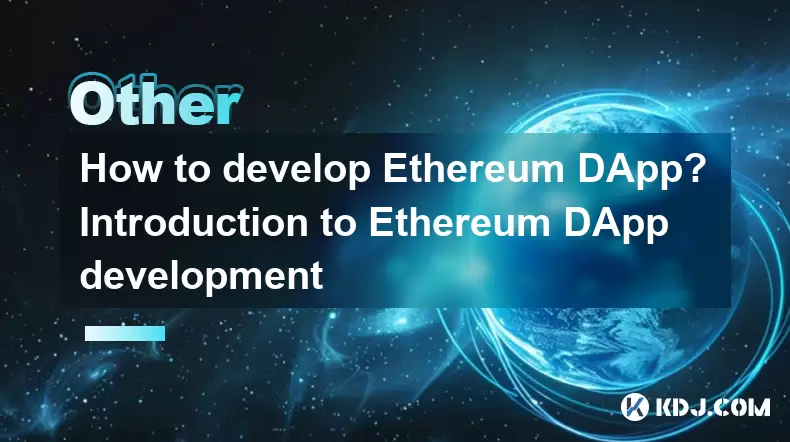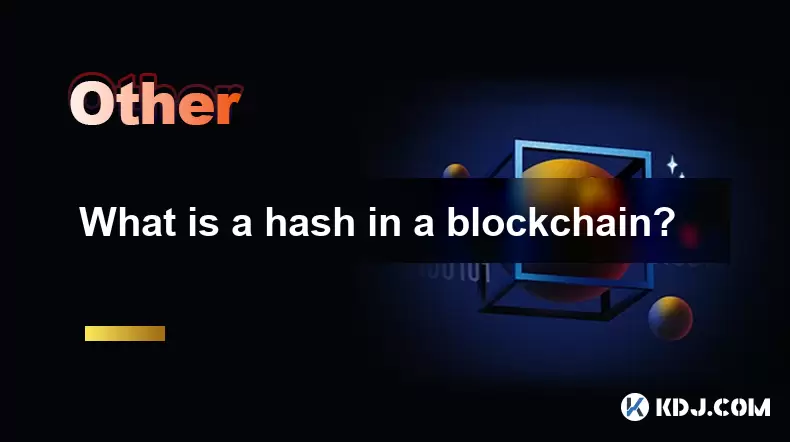-
 Bitcoin
Bitcoin $113900
-1.39% -
 Ethereum
Ethereum $3517
-4.15% -
 XRP
XRP $3.009
1.59% -
 Tether USDt
Tether USDt $0.9997
-0.04% -
 BNB
BNB $766.8
-1.41% -
 Solana
Solana $164.6
-2.38% -
 USDC
USDC $0.9998
-0.02% -
 TRON
TRON $0.3277
0.65% -
 Dogecoin
Dogecoin $0.2023
-1.67% -
 Cardano
Cardano $0.7246
0.05% -
 Hyperliquid
Hyperliquid $38.27
-4.77% -
 Sui
Sui $3.528
-0.52% -
 Stellar
Stellar $0.3890
-0.73% -
 Chainlink
Chainlink $16.16
-2.69% -
 Bitcoin Cash
Bitcoin Cash $539.9
-4.38% -
 Hedera
Hedera $0.2425
-2.00% -
 Avalanche
Avalanche $21.71
-0.97% -
 Toncoin
Toncoin $3.662
5.73% -
 Ethena USDe
Ethena USDe $1.000
-0.02% -
 UNUS SED LEO
UNUS SED LEO $8.964
0.35% -
 Litecoin
Litecoin $107.7
2.33% -
 Shiba Inu
Shiba Inu $0.00001223
-0.40% -
 Polkadot
Polkadot $3.617
-0.97% -
 Uniswap
Uniswap $9.052
-2.49% -
 Monero
Monero $295.1
-3.79% -
 Dai
Dai $0.9999
0.00% -
 Bitget Token
Bitget Token $4.315
-1.85% -
 Pepe
Pepe $0.00001060
0.11% -
 Cronos
Cronos $0.1342
-2.72% -
 Aave
Aave $256.0
-0.87%
How to develop Ethereum DApp? Introduction to Ethereum DApp development
Developing an Ethereum DApp involves creating decentralized, trustless applications using smart contracts and tools like Truffle, Ganache, and MetaMask for deployment and user interaction.
Jun 15, 2025 at 12:21 am

Understanding Ethereum DApp Development
Developing an Ethereum DApp (Decentralized Application) involves building applications that run on the Ethereum blockchain. Unlike traditional apps, which rely on centralized servers, DApps operate on a decentralized network of nodes, making them censorship-resistant and trustless. The process includes writing smart contracts, deploying them on the Ethereum Virtual Machine (EVM), and creating a front-end interface that interacts with these contracts.
To begin, developers need to understand the core components of an Ethereum DApp: smart contracts written in Solidity or Vyper, a blockchain explorer like Etherscan, and a web3 provider such as MetaMask for user interaction.
Setting Up the Development Environment
Before diving into coding, it's crucial to set up the right tools and frameworks. Start by installing Node.js and npm to manage JavaScript packages. Next, install Truffle, a popular development framework for Ethereum, using the command:
npm install -g truffle
Then, install Ganache, a personal blockchain for local testing. Ganache allows developers to simulate transactions without spending real Ether. After setting up the blockchain environment, install MetaMask, a browser extension wallet used to interact with DApps.
Also, configure Visual Studio Code with Solidity language support to write and debug smart contracts efficiently.
Writing Smart Contracts in Solidity
Smart contracts are self-executing programs stored on the Ethereum blockchain. They define the rules and logic of your DApp. To start, create a new Truffle project:
truffle init
Inside the contracts folder, create a .sol file. For example, a basic contract might look like this:
pragma solidity ^0.8.0;contract SimpleStorage {
uint storedData;
function set(uint x) public {
storedData = x;
}
function get() public view returns (uint) {
return storedData;
}
}
This contract stores a number and retrieves it. Compile the contract using:
truffle compile
Ensure that there are no syntax errors and that all functions behave as intended.
Deploying Smart Contracts to the Ethereum Network
After writing and compiling the smart contract, the next step is deployment. Create a migration script in the migrations folder. A sample migration script looks like this:
const SimpleStorage = artifacts.require("SimpleStorage");module.exports = function(deployer) {
deployer.deploy(SimpleStorage);
};
Start Ganache to launch a local blockchain instance. Then run:
truffle migrate
This command deploys the contract to the local Ethereum network. To deploy to a testnet or mainnet, modify the truffle-config.js file to connect to networks like Rinkeby or Mainnet via Infura or Alchemy.
Make sure to fund your account with test Ether if deploying to a testnet.
Building the Front-End Interface
Once the smart contract is deployed, users need a way to interact with it. Use HTML/CSS/JavaScript or frameworks like React to build the front end. Install web3.js or ethers.js to connect the front end to the blockchain.
For example, using web3.js, you can call the contract's functions:
- First, load the contract ABI and address.
- Initialize Web3 with MetaMask provider.
- Call the
get()function and display the result.
Here’s a snippet:
if (window.ethereum) {
window.web3 = new Web3(ethereum);
try {await ethereum.enable();
const accounts = await web3.eth.getAccounts();
const contract = new web3.eth.Contract(abi, contractAddress);
const data = await contract.methods.get().call();
document.getElementById('output').innerText = data;
} catch (error) {
console.error("User denied account access");
}
}
Ensure that buttons and forms trigger contract interactions correctly.
Testing and Debugging Your DApp
Testing is essential to ensure functionality and security. Use Truffle Test to write unit tests for your smart contracts. Create a test file under the test directory:
- Write assertions to verify function outputs.
- Simulate different scenarios like invalid input or unauthorized access.
Use Remix IDE for quick debugging of small contracts. For more complex issues, use Truffle Debugger to step through transactions.
Always check for common vulnerabilities like reentrancy attacks, integer overflow/underflow, and gas limit issues.
Frequently Asked Questions (FAQs)
Q: What programming languages are supported for Ethereum DApp development?
A: The primary language is Solidity, but alternatives include Vyper, Yul, and LLL. Solidity is most widely adopted due to its extensive tooling and community support.
Q: Can I develop a DApp without writing smart contracts?
A: No, smart contracts are the backbone of any DApp on Ethereum. However, you can integrate existing contracts from open-source libraries like OpenZeppelin to avoid writing everything from scratch.
Q: Is it possible to update a deployed smart contract?
A: Ethereum smart contracts are immutable by default. To make changes, you must deploy a new contract or use upgradeable proxy patterns, which require careful design and additional complexity.
Q: How much does it cost to deploy a DApp on Ethereum?
A: Deployment costs depend on gas fees, which vary based on network congestion. Deploying a simple contract may cost $10–$50 during low activity, but could be significantly higher during peak times.
Disclaimer:info@kdj.com
The information provided is not trading advice. kdj.com does not assume any responsibility for any investments made based on the information provided in this article. Cryptocurrencies are highly volatile and it is highly recommended that you invest with caution after thorough research!
If you believe that the content used on this website infringes your copyright, please contact us immediately (info@kdj.com) and we will delete it promptly.
- DeFi Token Summer Gains: Is Mutuum Finance the Real Deal?
- 2025-08-02 18:30:12
- Bitcoin, Realized Price, and the Top: Are We There Yet?
- 2025-08-02 18:30:12
- Dogwifhat (WIF) Rally: Will the Meme Coin Bite Back?
- 2025-08-02 19:10:12
- PayFi Heats Up: Tron's AMA Recap & TRX's Bullish Nasdaq Debut
- 2025-08-02 19:10:12
- ARK Invest, Coinbase, and BitMine: Decoding the Crypto Investment Shuffle
- 2025-08-02 19:15:23
- JasmyCoin Under Pressure: Bears Grip Tight, Testing Lower Support
- 2025-08-02 19:15:23
Related knowledge

What is the difference between on-chain and off-chain transactions?
Aug 02,2025 at 04:22pm
Understanding On-Chain TransactionsOn-chain transactions refer to digital asset transfers that are recorded directly on a blockchain ledger. These tra...

What is the double-spending problem and how does blockchain prevent it?
Aug 02,2025 at 01:07pm
Understanding the Double-Spending ProblemThe double-spending problem is a fundamental challenge in digital currency systems where the same digital tok...

What is the difference between a blockchain and a database?
Aug 01,2025 at 09:36pm
Understanding the Core Structure of a BlockchainA blockchain is a decentralized digital ledger that records data in a series of immutable blocks linke...

How does blockchain handle scalability?
Aug 02,2025 at 02:58pm
Understanding Blockchain Scalability ChallengesBlockchain scalability refers to a network's ability to handle an increasing volume of transactions wit...

What is a hash in a blockchain?
Aug 02,2025 at 05:28am
Understanding the Concept of Hash in BlockchainA hash in the context of blockchain technology refers to a unique digital fingerprint generated by a cr...

What is a hash in a blockchain?
Aug 02,2025 at 04:43am
Understanding the Concept of Hash in BlockchainA hash in the context of blockchain technology refers to a unique digital fingerprint generated by a cr...

What is the difference between on-chain and off-chain transactions?
Aug 02,2025 at 04:22pm
Understanding On-Chain TransactionsOn-chain transactions refer to digital asset transfers that are recorded directly on a blockchain ledger. These tra...

What is the double-spending problem and how does blockchain prevent it?
Aug 02,2025 at 01:07pm
Understanding the Double-Spending ProblemThe double-spending problem is a fundamental challenge in digital currency systems where the same digital tok...

What is the difference between a blockchain and a database?
Aug 01,2025 at 09:36pm
Understanding the Core Structure of a BlockchainA blockchain is a decentralized digital ledger that records data in a series of immutable blocks linke...

How does blockchain handle scalability?
Aug 02,2025 at 02:58pm
Understanding Blockchain Scalability ChallengesBlockchain scalability refers to a network's ability to handle an increasing volume of transactions wit...

What is a hash in a blockchain?
Aug 02,2025 at 05:28am
Understanding the Concept of Hash in BlockchainA hash in the context of blockchain technology refers to a unique digital fingerprint generated by a cr...

What is a hash in a blockchain?
Aug 02,2025 at 04:43am
Understanding the Concept of Hash in BlockchainA hash in the context of blockchain technology refers to a unique digital fingerprint generated by a cr...
See all articles

























































































